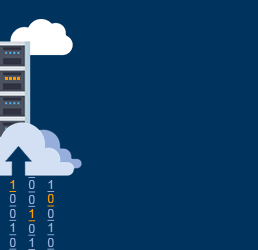New on LowEndTalk? Please Register and read our Community Rules.
All new Registrations are manually reviewed and approved, so a short delay after registration may occur before your account becomes active.
All new Registrations are manually reviewed and approved, so a short delay after registration may occur before your account becomes active.

















Comments
To prevent Oracle Cloud from deactivating idle servers in their free tier, you can set up a simple automation to periodically perform a lightweight task on the server. This can include scheduling a cron job, setting up a basic script. This activity will help to keep the server active and prevent it from being considered idle.
Why would you want a free VPS and let it inactivity?
install qbt and keep it running for a couple of days per week?
(Even)Low(er)EndIdiling
regardless, you might as well run a tor relay/bridge or an i2p node or somethinf
Run snowflake!
https://snowflake.torproject.org/
If it's just layi hai around you can give it to someone else.
Upgrade to PAYG.
Run Yabs on cron
Install Kasm workspaces, it works great as a testing and desktop machine
I execute a shell script that resembles the following:
I run Folding @ Home on mine which maxes out the cpu @ 100% 24/7 - been running for a few months.
I do weekly backups using one of them as a target. Never received an idle warning, running since mid-2021.
I'm wondering what impact will nice command have on an idling VPS.
https://github.com/layou233/NeverIdle/blob/master/README_en.md
IDLE means something different to me and to Oracle. For example, I running some IRC related processes (ZNC, eggdrop, etc). I use it day by day. But this processes usually make very low traffic & system usage. I think, it's not IDLE, but sometimes Oracle's system say this.
For example, I running some IRC related processes (ZNC, eggdrop, etc). I use it day by day. But this processes usually make very low traffic & system usage. I think, it's not IDLE, but sometimes Oracle's system say this.
When I first time received this notification, not really understood. "Hey, I not overuse their free resources", and I will get "penalty"? After that I started to use more processes, and generated some extra "fake" traffic.
After that I started to use more processes, and generated some extra "fake" traffic.
Same post on LES. I like the answers there better, more than mine as well.
Upgrade to pay as you go and stay within free tier. You don’t get changed. Smart and simple but not for everyone I guess.
I use stress-ng running on a cron job
This example cron job would stress 4 cores at 18% usage for 10m every day:
0 0 * * * stress-ng --cpu 4 --cpu-load 18 -t 10m >/dev/null 2>&1
dd if=/dev/urandom of=/dev/nullNever had a problem, until I rebooted the machine and forgot to run this.
There goes my 4C24G in Tokyo.
Btw, you also need to login to their portal once in a while.
Run a GlobalPing node via docker.
What's the minimum frequency required to login to avoid cancellation? They'll cancel for not logging in even if you have an active service running?
Is there any reason someone might not want to take this approach?
Without upgrading, any paid resources are simply unavailable, no risk of accidentally enabling it or going over a limit (though to be fair, currently the only viable way to go over this without explicitly allocating additional resource is by transferring over 10 TB in a month, which would be an achievement in itself)
Some people don’t want to accidentally provision resources they have to pay for. Cannot happen if you don’t upgrade.
It will not interfere with the CPU resources required for my primary tasks.